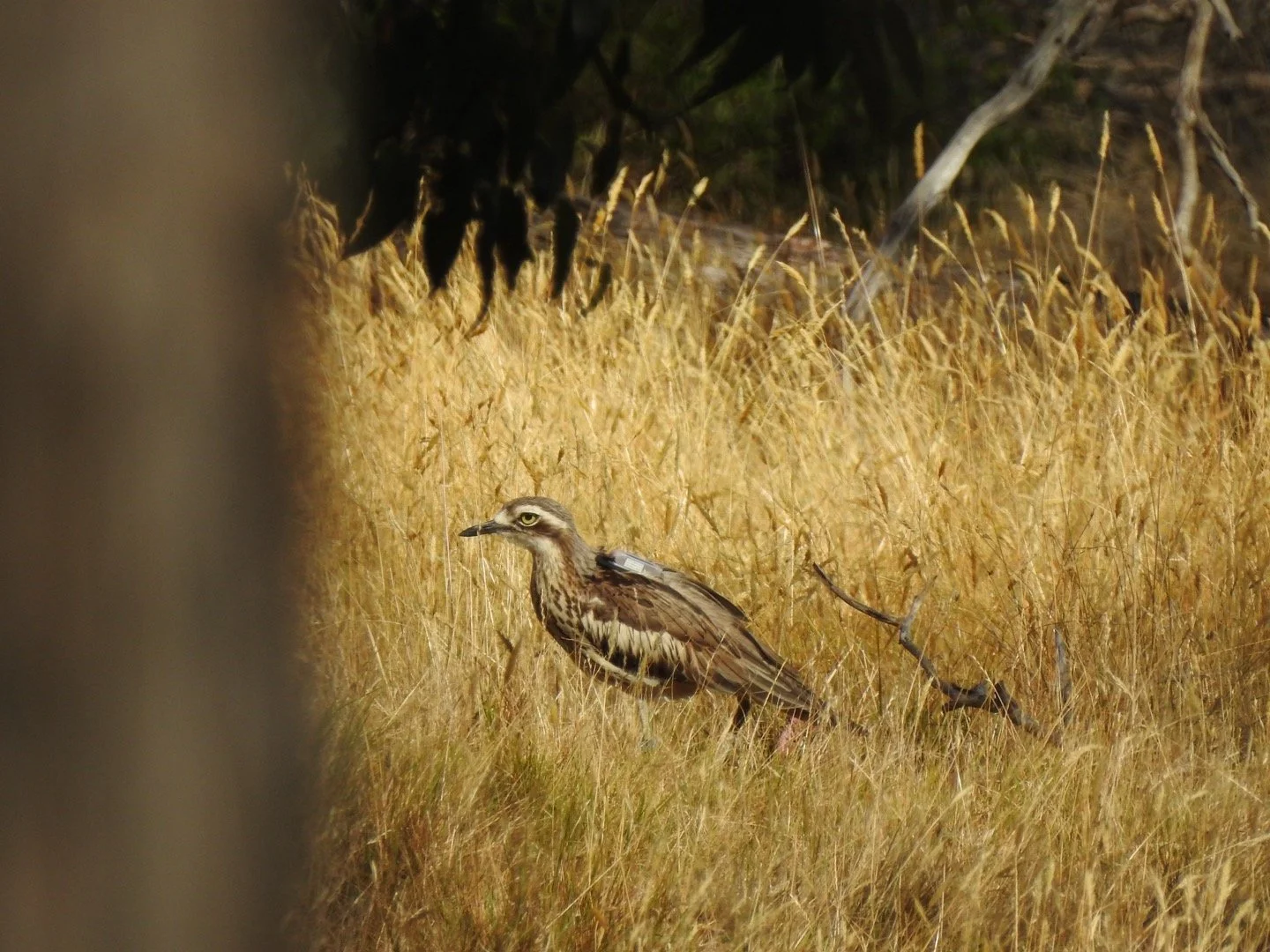
BUSH STONE-CURLEW
The bush stone-curlew (burhinus grallarius), is a ground-dwelling, nocturnal bird once widespread across Australia's open landscapes. Recognisable by its haunting, wailing calls at night, this species has experienced significant declines, particularly in southeastern Australia, due to habitat loss and predation by introduced species.
Physical description
Standing approximately 55 cm tall, the bush stone-curlew has long legs, large yellow eyes, and mottled grey-brown plumage with dark streaks, providing excellent camouflage in its natural habitat. Despite having a wingspan close to one meter, it prefers to run or remain motionless when threatened, relying on its camouflage to avoid detection.
Habitat and distribution
Historically common in Australia's woodlands, grasslands, and open forests, the bush stone-curlew has disappeared from about 90% of its former range in southeastern regions. It is now extinct in many areas south of the Great Dividing Range. The species prefers open habitats with sparse vegetation, which are increasingly fragmented due to land clearing and development.
Behaviour and diet
Bush stone-curlews are nocturnal foragers, feeding on insects, spiders, frogs, and small reptiles. They are known for their eerie nighttime calls and unique defensive behaviour of freezing to avoid detection.
Breeding
These birds form monogamous pairs and breed during spring and summer. Nests are simple ground scrapes where they lay up to two eggs per clutch. Both parents share incubation duties for about 30 days. Chicks are precocial, leaving the nest shortly after hatching but remain dependent on their parents for guidance and protection.
Conservation status
LC
NT
VU
EN
CR
EW
EX
Least Concern
Near Threatened
Vulnerable
Endangered
Critically Endangered (FFG Act 1988)
Extinct in the Wild
Extinct
Threats
Habitat loss: clearing of native vegetation for agriculture and urban development reduces available breeding and foraging grounds.
Predation: introduced predators such as red foxes and feral cats pose significant threats, especially to eggs and chicks laid on the ground.
Human disturbance: recreational activities can disrupt breeding and feeding behaviours.

Success in the field
Odonata is actively involved in the conservation of the bush stone-curlew through:
Captive breeding: initiated at Mt Rothwell Sanctuary in 2019, with birds sourced from various locations to ensure genetic diversity.
Reintroduction programs: successful releases have occurred at Phillip Island, Orana & Mulligans Flats with ongoing monitoring using GPS tracking devices.
Habitat restoration: efforts to restore and maintain suitable habitats within predator-free sanctuaries.
Population goals: aiming to establish healthy populations of 500 bush stone-curlews across five locations in Victoria and NSW.

